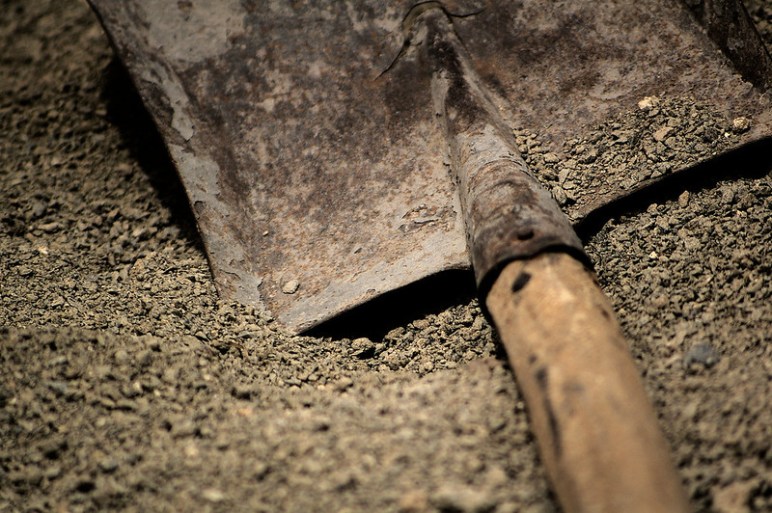Of course the title of this blog is not referring to that icon of our childhood, the “… Happy Hamburger Clown” of Golden Arches fame; although he has had his legal issues too (he was sued civilly for promoting child obesity.) No, this is in reference to Ron MacDonald, the current head of the Independent Investigations Office (IIO) for the Province of British Columbia. This is the group, with an annual budget of about $10 million, that is mandated to “conduct investigations into police-related incidents resulting in death or serious harm to determine whether any officer may have committed an offence”. There is a general consensus growing that the group is in trouble, it is not fulfilling it’s mandate, in fact many say they are failing and failing miserably. Mr. MacDonald himself has recently been speaking out on his own frustrations.
The police could not and should not investigate themselves was the repeated slogan coming from those of the political left of centre a number of years ago. It stirred the politicians to act in September of 2012. Like most political policy, it was the result of a political reaction to a rather immature and naive understanding of police wrongdoing. The theme had been pushed forward by a vocal minority, which in turn was then given an audience by the Davies and Braidwood inquiries, which looked into the deaths of Frank Paul and Robert Dziekanski respectively.
Paul was a 48 year old Mi’kmaq who Vancouver Police officers tried to book into the “drunk” tank, but they were turned away when the on duty Sgt said that he had only just released Mr. Paul, two hours before from cells and he wasn’t going to book him again after such a short period of time. So the officers took Paul away and returned him to the downtown alley. He was clearly still intoxicated and he subsequently died of exposure and hypothermia in the alley. However, after a total of five Crown reviews of the case, all concluded that “charges were not warranted” against the Vancouver City officers involved.
Dziekanski was a more widely reported incident where police responded to a disturbance in the Vancouver Airport, when Dziekanski a Polish immigrant who had just arrived, was wandering disoriented around the terminal and then began causing a ruckus. Four officers attended and tasered him saying they felt threatened. Dziekanski died of heart failure. The four officers believed they were both justified in their actions and within the limits of their training. Some of the officers were charged, but not for the death, but for perjuring themselves during the Braidwood inquiry. Judge Braidwood at the inquiry conclusion said that the officers “didn’t intend to cause his death”.
So what prompted the birth of the IIO was a political demand, which used as it primary evidence two cases– both of which showed there was no wrong-doing on the part of the police.
Irony aside, the first IIO chief was Richard Rosenthal, who left the job early to return to the world of academia and probably did not leave the best impression. He was then succeeded by Mr. MacDonald in 2017. MacDonald came from the legal world, he was a defence counsel for 6 years, and then a Prosecutor for 17 years and had a distinguished record. All of which makes his recent comments a little more perplexing.
In short Mr. Macdonald is now making a case and has gone public with his concerns about the lack of charges being approved in the IIO cases that were presented to Crown Counsel. What prompted his comments seems to have been, once again, a political reflex to some media pressure centred around two Indigenous cases.
One case involves a 38 year old Wet’suwet’en named Jared Lowndes, who during his arrest the police had to use a taser, a police dog, and then after ramming his vehicle, he was eventually shot in a Tim Hortons parking lot. The Crown in that case concluded and stated that they were “unable to prove that officers committed any offence in relation to the incident”.
The second case involved Dale Culver, a Wet’suwet’en and Gitxsan indigenous male who during his arrest was pepper sprayed and punched when checked by police who were answering a call where it was alleged that he was “casing vehicles”. During the course of their investigation the IIO went to three different pathologists all of whom identified the primary cause of death as “tiny blood clots in lungs”, but that the blunt force trauma by the officers was a “contributing factor”. The IIO felt that the officers should have been charged based on the “contributing factor”. The Crown in their review went to a fourth pathologist, who identified the cause of death as being “cardiac arrest due to the effects of methamphetamine”. So after seven years, the officer was given an absolute discharge.
During this time, the officer’s career has been put on hold and he had been subjected to death threats. The Union of BC Indian Chiefs, who clearly feel that they have not only the right to disagree and inflame the issue, but also feel that they should be the ultimate arbiters of any criminal case involving their own, issued a statement saying: “We have a system that says when you have a gun and a badge, you can kill any Indigenous person in any town in B.C. and not go to jail”. The stupidity of the statement went un-challenged by the government.
Mr. MacDonald regardless of whether these particular cases motivated him, says the system isn’t working. He tips his political hand a bit though when he states the people have “lost faith in the system..in particular Indigenous communities.” He may have lost faith, but far be it for me to point out to a lawyer an obvious truism. The Crown has always operated on the premise of “substantial likelihood of conviction”. They have a legal need to prove a case of guilt “beyond a reasonable doubt”. Does Mr. MacDonald not see the reasonable doubt in the Culver case?
The IIO has been on shaky ground since its inception. The mandate given from the beginning was much too broad, and this was pointed out even by Rosenthal in his departure. He said at the time that it was going to cause a backlog of causes when there was no ability to “triage” the cases.
There was also a large problem in the staffing this organization. The government of the day said that the overall intention, once established, was to have all “civilian investigators”. Remember the police could not be trusted in their theoretical framework. So they limited the ability of ex-officers who could apply, especially those from B.C. If you carry this logic forward, the thought was that investigating an “officer related shooting” did not require any policing experience or knowledge of police operational structures.
There were also internal problems in the beginning, which seem to be continuing today. In 2015 there were investigations into allegations of “bullying and harassment”, allegedly due to the culture clash from hiring former police officers. During this time 17 investigators, and five non-investigative staff left the organization, only a couple of years after its inception. Flash forward to 2023 and Mr. Macdonald began speaking out and complaining of the lack of investigative resources. By then there were only 19 investigators working and 17 unfilled positions. To add to the resourcing problems, officer related shootings had increased by three times from the previous years.
The IIO in 2023 had been called in 232 cases, of which 193 led to further investigations. At the time of the article, they had 90 open investigations involving 38 deaths. In 2023, 50% of the staff were still ex-police officers and Mr MacDonald and his management staff were in turn being internally and publicly accused of bad behaviour “which created a hostile work environment… with their “belittling behaviour”.
So now in 2024 Mr. MacDonald’s has further complaints which he recently took to the air waves on the local radio station CKNW. Mr. Macdonald is now complaining about the lack of charge approval which he says is leading to a failing in “police accountability”. In the last five years, the IIO has recommended 39 cases for charge, and only 18 were approved for charge. Even more startling is the fact that since the IIO inception in 2012, only 15 cases reached the court stage, and there were 0 convictions. There was no mention of the length of time for these matters to get through the court process, which the IIO is hesitant to speak about, at least on their own official website.
If one assumes these stats to be correct, there are only a few possible answers to Mr. MacDonalds problems. One being that cases without merit are being forwarded, or the investigations being forwarded are flawed and incomplete; and simply do not meet the charge approval threshold. Or b) the process itself is not working. If it is the former, then it also may be possible that in the vast majority of cases the police are in fact innocent, and simply doing their job and doing it properly.
If it is “the process” then there are significant layers to that problem. Understaffing is clearly one of those problematic layers, as there is no possible way that you can take on every referral with such limited staff and capabilities. So you need to cut the mandate or “triage” the files more expertly as was suggested by Rosenthal.
You also need to forget the “civilianization” of the investigative team. You need to bring in ex-police officers with high levels of expertise and with significant standing amongst other current police officers. They are out there, but you need to go and find them. Building credibility is absolutely key and they have not done that since their inception. Currently the IIO is fighting the police forces, or specifically their unions on two fronts; on the access to police notes and in the area of “lethal force experts” –who are usually ex-police officers brought in to testify. They should not have to fight these fights, and better quality investigators with greater credibility will go a long way in working through those issues.
The problems within IIO are not new. They are similar to the problems which in more recent times arose from the “de-funding” era. It is a fundamental failure in common sense. The IIO mandate and their make-up is clearly flawed and has been from the beginning. One may even have to conclude that the best people to investigate the police may be the police themselves. Whether the public perception changes and the media narrative becomes less inflammatory towards the police, or whether the government understands this, is quite another matter.
Photo courtesy of Flickr Commons by David Jackmanson – Some Rights Reserved









